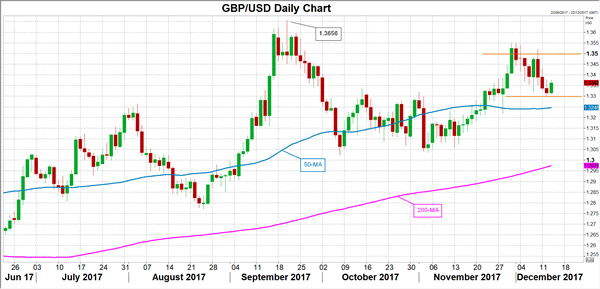Monetary policy meetings by the European Central Bank and the Bank of England this week have had their limelight stolen by the US Federal Reserve, which is expected to move on rates while no action is anticipated from the ECB and the BoE.
Both central banks took historic decisions at their last respective meetings, with the ECB halving its monthly asset purchases from January 2018 and the BoE raising its benchmark rate by 25 basis points to 0.50% – the first increase in more than a decade. Neither central bank is therefore likely to change its tune so soon after their previous meetings.
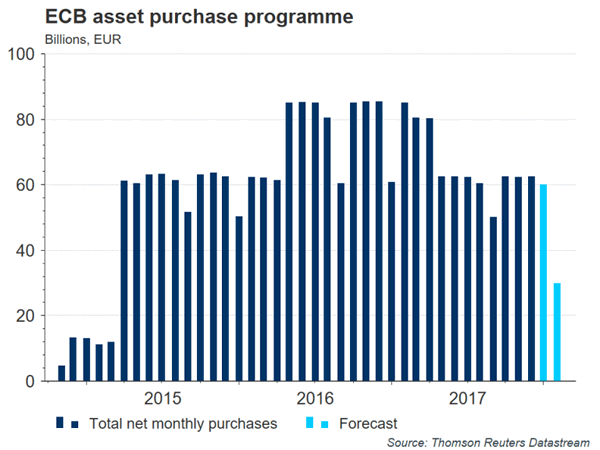
The main focus for the ECB meeting will be the updated staff macroeconomic projections, which will include for the first time the forecasts for 2020, and this may give some clues as to how soon interest rates will start to go up. The ECB is expected to once again revise up its growth forecasts, but more important will be the outlook on inflation. In the September projections, headline CPI was expected to average 1.5% in 2017, to dip to 1.2% in 2018 and to rise back to 1.5% in 2019. CPI excluding food and energy was also expected to pick up to 1.5% in 2019. If the projections for 2020 show underlying inflation further edging up nearer to 2%, this could indicate that interest rates may start to rise in late 2018.
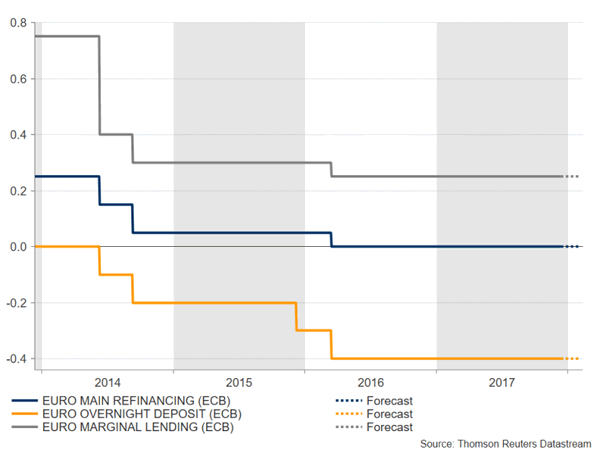
Such projections could become a catalyst for traders to buy the euro. The single currency has been consolidating since touching a 2½-year high of $1.2092 in September. ECB policymakers’ attempt to play down their tapering decision by keeping the stimulus program open-ended hasn’t done the euro any favours, which has been stuck in a range of $1.1550-1.1960 during the past two months.
ECB head, Mario Draghi, is unlikely to steer away from recent language and would not want to give any new signals on future policy at his press conference on Thursday. However, more optimistic-than-expected forecasts could provide the euro enough of a lift to challenge its November top of $1.1960.
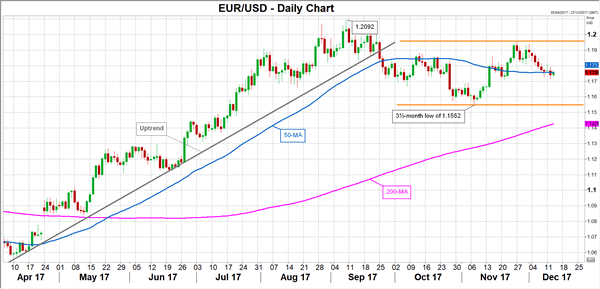
The Bank of England is also not expected to diverge from its last statement, having updated its quarterly projections only in November. Traders who are hoping for fresh insight into the timing of the next BoE rate hike will likely be disappointed as the outlook on the British economy hasn’t changed since November to warrant a shift in the expected rate path.
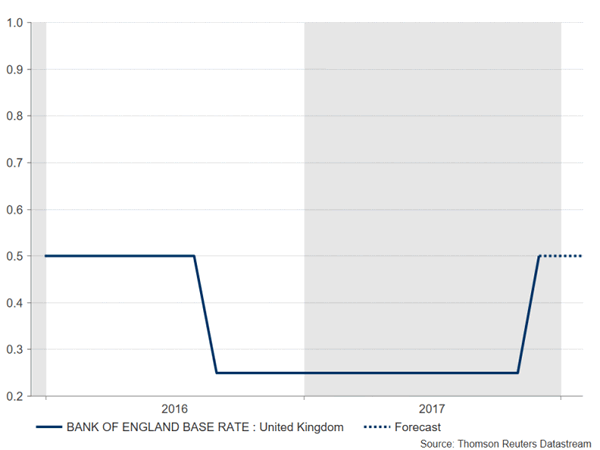
Inflation data released this week showed UK inflation crossed above the BoE’s upper limit of 3%, reaching 3.1% in November to its highest in almost six years. However, this would have come as no surprise to the Bank, and MPC members will want to wait and see how inflation pans out over the coming months as well as how the Brexit talks progress before setting the ground for another rate hike.
The pound didn’t see much of a reaction to Tuesday’s stronger-than-expected inflation data as Brexit uncertainty is once again the main concern for investors. Having lost some of its shine after the boost it received from the Brexit divorce deal, sterling is sensitive to a hawkish tilt in the BoE’s statement on Thursday, which could help the currency head back towards its early December highs above $1.35.
Another risk though for the pound is negative developments at the EU summit on Thursday-Friday. EU leaders are expected to formally approve for the Brexit negotiations to move to the second phase, which will involve the post-Brexit trade arrangements and an agreement on a transition period. The UK Brexit Secretary, David Davies, angered EU officials this week when he suggested that the deal struck on the divorce terms was not legally binding. This could prompt the EU to take a tougher stance at the summit. Any setback in the talks could push the pound below the recent support area of $1.33.
